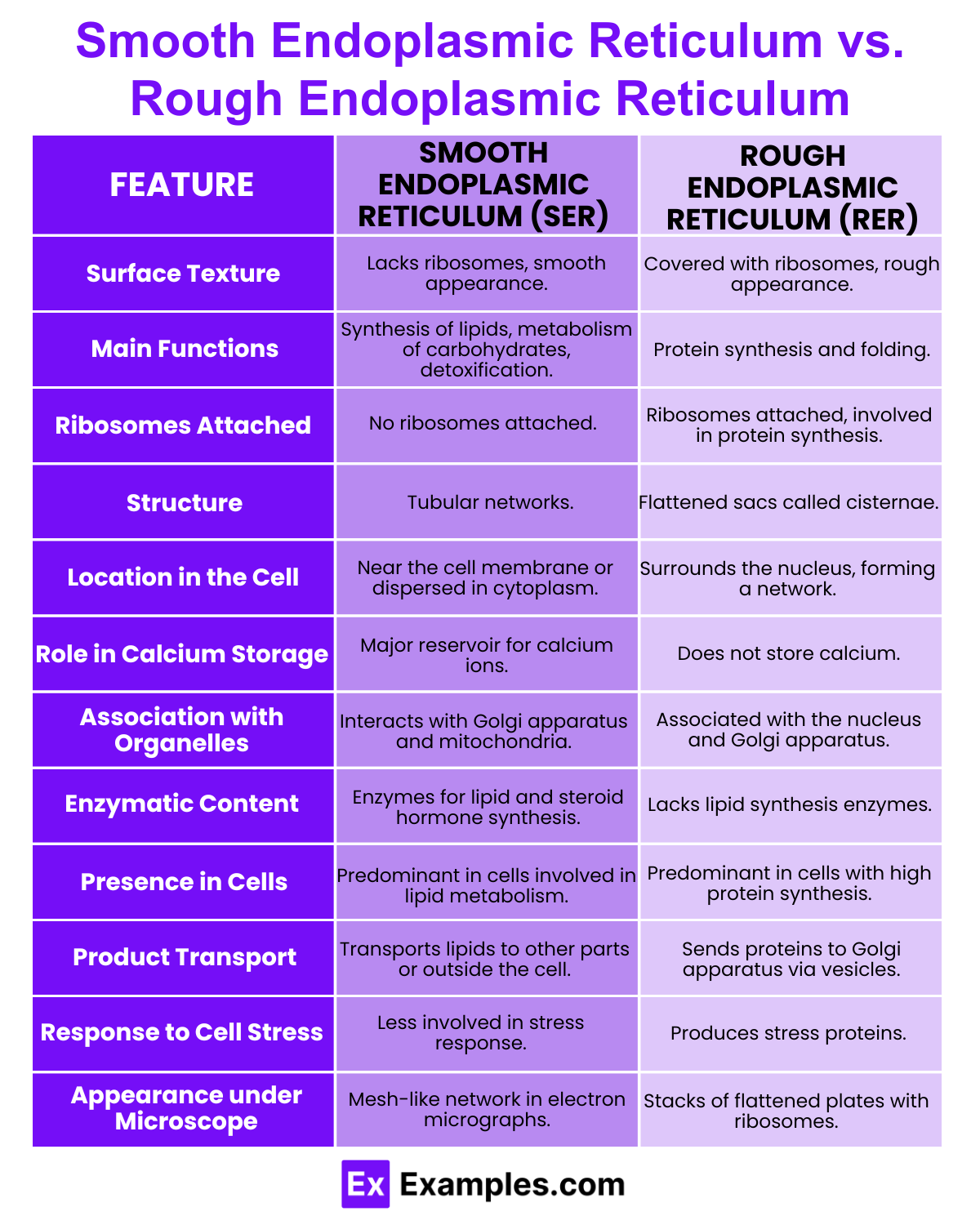What is a key difference between smooth endoplasmic reticulum (SER) and rough endoplasmic reticulum (RER)?
SER is involved in protein synthesis, while RER is involved in lipid synthesis
RER is studded with ribosomes, while SER lacks ribosomes
SER is involved in cellular respiration, while RER is involved in photosynthesis
RER stores calcium ions, while SER does not




